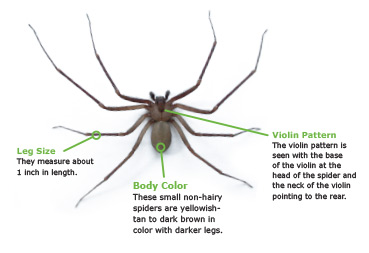
The federal Health Secretariat has issued a warning that the
arachnid, also known as a Brown Recluse spider and part of the Loxosceles
genus, is increasingly being found in Mexico and cases of bites have been
reported. This spider is also known as the Baja Recluse or Violin spider. It’s the
Baja moniker which is of most interest to residents here as the spider is now
showing up in the Southern Baja, having previously been found mostly in the north.
Health authorities say the spider’s poisonous bite has
killed about 200,000 people around the world so far this year, although the
Pest Management Program at the University of California Berkeley says 90% of
bites heal without medical attention.
Their necrotic bite, which means their venom contains a
potent tissue-destroying agent, can cause chills, fever, nausea, muscle pain
and flu-like symptoms along with blisters. These become open sores which take
up to 45 days to heal. If they become infected it can create serious
complications and severe scarring.
Oftentimes minor skin irritations are mistaken for spider
bites. Even in homes where brown recluses have been found, seldom have the
occupants experienced a bite. Many bites will cause just a little red mark that
heals without event, and 90 percent of brown recluse bites heal without severe
scarring.
As with most spiders, the Baja Recluse spider normally only
bites when disturbed. It is usually found in dark and secluded places and is
primarily nocturnal. People are normally bitten by accident when they put on
clothes in the morning that they have left on the floor: a warning to teenagers
everywhere!
There is no antidote for the poison.
Health officials say victims should apply ice to the bite
and seek medical attention without delay. They warn against using one’s mouth
to suck out the poison.